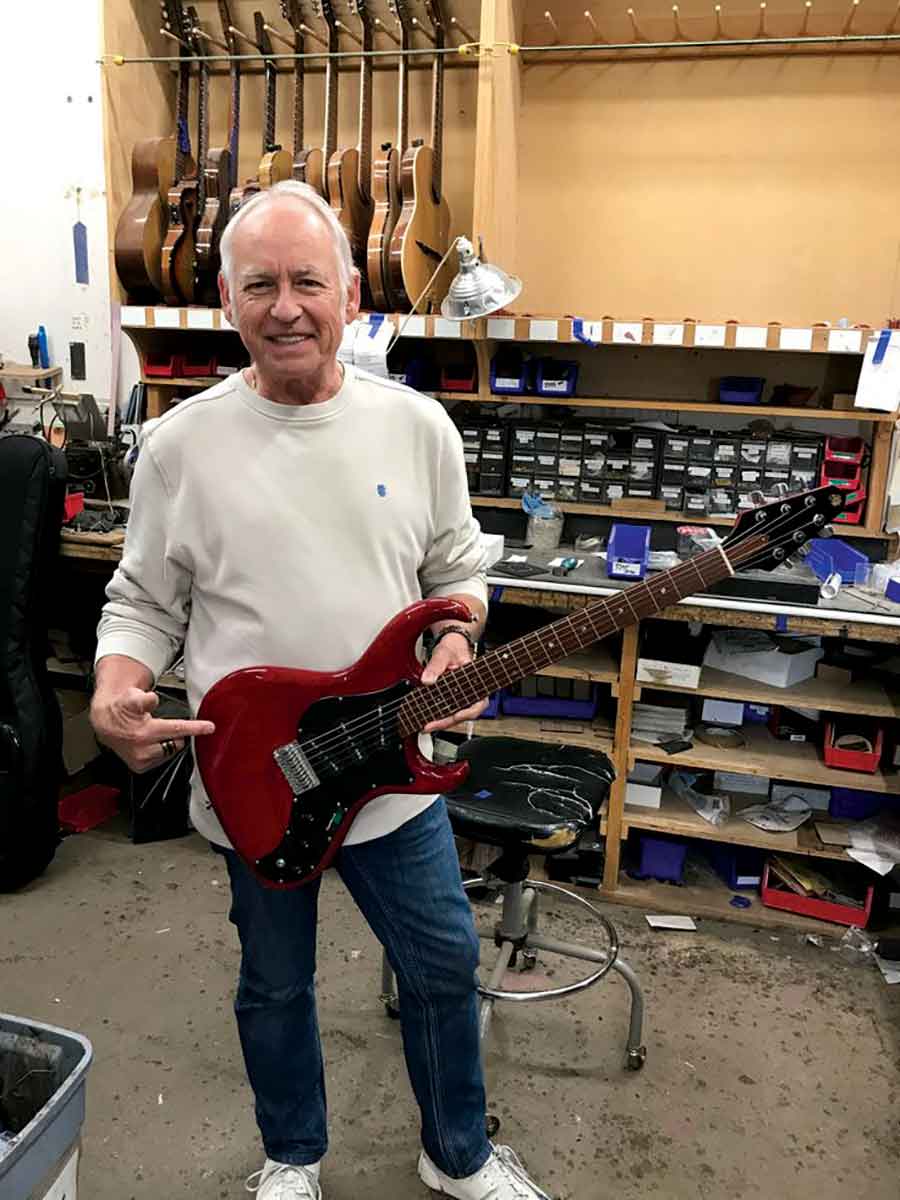Pioneering Luthier Rick Turner, 1943-2023
Mark Thomas, a reader of The Canyon Chronicle, recently passed this along, with this tidbit of Topanga history: ‚ÄúRick Turner had a shop on Fernwood across from 850, The Old Stalin Furniture Shop. He might have lived in the house there, too. Not sure how many years, maybe five, and then went north.‚ÄĚ
In a statement released via¬†Instagram, Rick Turner‚Äôs children, Ethan and June Turner, announced that their father died on 17 April of ‚Äúcomplications from congestive heart failure and stroke‚ÄĚ.¬†Responding to the Turner family‚Äôs statement, Paul Reed Smith described Turner as a ‚Äúspecial soul.‚Ä̬†
‚ÄúRick Turner was a gifted guitar maker, an innovator, and a special soul,‚ÄĚ wrote Smith. ‚ÄúAt the beginning of my career, he selflessly helped my company through a review in Guitar Player magazine. His honesty and willingness to help another instrument maker left a lifelong, very positive impression on me. I send my very best to his family and friends.‚ÄĚ
Turner leaves behind a formidable legacy. His designs were ahead of their time. Perhaps none more so than the chamber-bodied Turner Model 1 he would make for Lindsey Buckingham in 1979, adapting it into a signature guitar for the former Fleetwood Mac guitarist. 
If it weren‚Äôt for the precarious nature of the music business, the luthiery world might have been deprived of Turner‚Äôs talents. In the ‚Äė60s, he played in psych-rock band Autosalvage, releasing one self-titled album in 1968, getting good reviews. But the band split before it could go much further.¬†
Turner cut his teeth in guitar repairs working out of Boston with former cabinetmaker Stan Stansky and jazz guitarist Don Gadbois. Speaking to Premier Guitar in 2010, he expressed horror at some of the techniques used back them, but ultimately the experience stood him in good stead.
‚ÄúI learned luthiery primitive from these guys,‚ÄĚ said Turner. ‚ÄúWhen I look back at the way we did things, I‚Äôm in shock. I mean, it was just horrendous. Those were the dark ages of American small-shop luthiery and guitar repair. Nobody knew anything outside of the factories‚Ķnobody knew Jack Diddley squat. A few classical builders were starting to do things, and I knew a few people just starting to try to build acoustic guitars.¬†
‚ÄúWe who got into it in the early to mid-‚Äô60s were really on our own in terms of ‚ÄėHow do you do this?‚Äô and ‚ÄėHow do you do that?‚Äô Some of the repair techniques were utterly brutal. We didn‚Äôt know about steaming necks off for doing neck resets, we just slammed them out!‚ÄĚ
The repairing route offered Turner an in. He did odd jobs for Dan Armstrong in New York. When he was offered the opportunity to turn a smashed-up Gibson SG and parts into something new, he took it. It was a wise move. Jerry Garcia bought that guitar, then used it on 1971‚Äôs Skull And Roses. Co-founding Alembic in 1969, Turner would deepen the connection with the Grateful Dead when he helped design their infamous ‚ÄėWall of Sound‚Äô P.A. system.
In 1976, Turner patented the graphite neck with Geoff Gould. Three years later he would form Rick Turner Guitars. In 1988, he joined Gibson, but decided to leave by 1991. His Electroline bass guitar design was originally intended for Gibson but it was never picked up. But Turner would put it into work. Besides guitars and basses, Rick Turner Guitars also made ukuleles.
Turner’s designs often blurred the distinction between guitar making and art. The Pretzel was one such design, and was exhibited in the San Francisco Museum of Modern Art and New York City’s Museum of Art and Design.
Made a year before Alembic was founded, his first neck-through¬†electric guitar¬†was carved largely by hand, with Turner using a diamond saw to carve the abalone inlays, then using the same saw to carve the ceramic magnet for the hand-wound pickups.¬†The metal work on the guitar was performed using jewelry techniques learned from Anne Dick, the ex-wife of sci-fi author Philip K Dick. ‚ÄúAnne had set three of us up as cottage industry sub-contractors in the Pt. Reyes Station area, and I learned to do light forging, welding, and silver soldering from her,‚ÄĚ wrote Turner on his website.
But there was a hugely practical element to Turner‚Äôs guitar-making. There was form and function behind his work, and an aesthetic that referenced the history of stringed instruments to present something that was at once fresh and new. The Model 1 was inspired by Johann Georg Stauffer‚Äôs ‚Äď a 19th-century design that informed a 20th-century guitar that remains just as forward thinking today.
Originally published April 19, 2022 in Music Radar Newsletter (musicradar.com/news/rick-turner-obituary)
Jonathan Horsley has been writing about guitars and guitar culture since 2005, playing them since 1990, and regularly contributes to MusicRadar, Total Guitar and Guitar World. He uses Jazz III nylon picks, 10s during the week, 9s at the weekend, and shamefully still struggles with rhythm figure one of Van Halen’s Panama.
The legendary luthier Rick Turner, whose creations helped shape the design of high-end electric guitars, died on April 17, 2022, aged 78, accor In a statement released via Instagram , his children Ethan and June Turner announced that their father had¬†died¬†on 17 April of ‚Äúcomplications from congestive heart failure and stroke‚ÄĚ.









